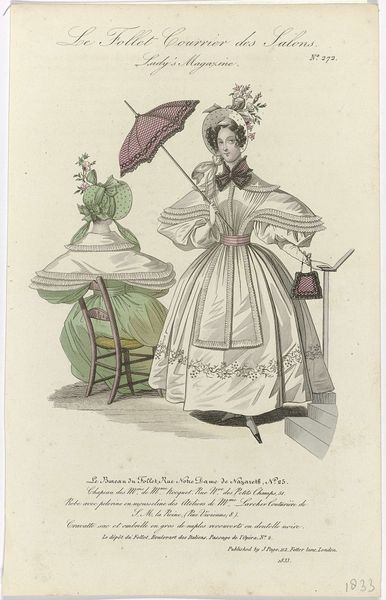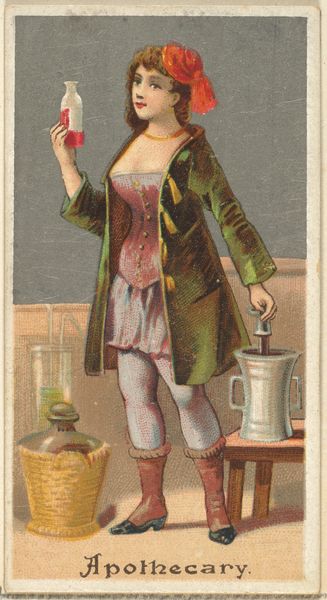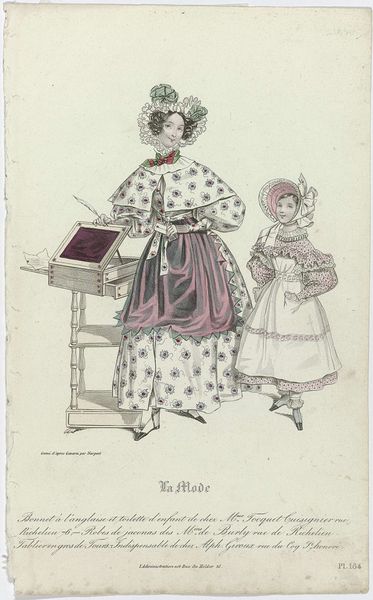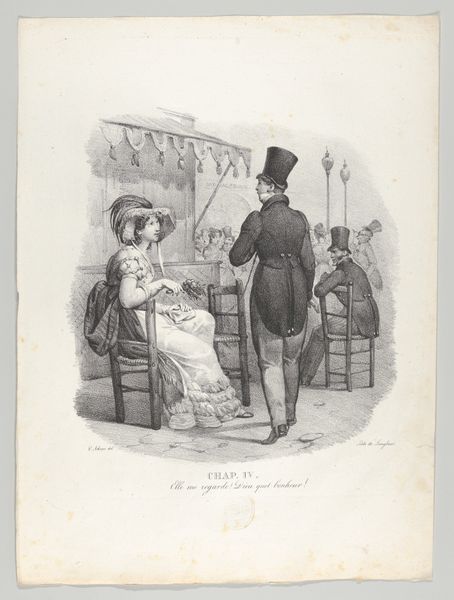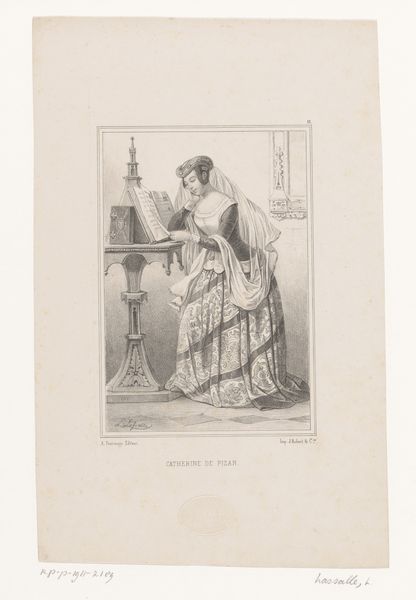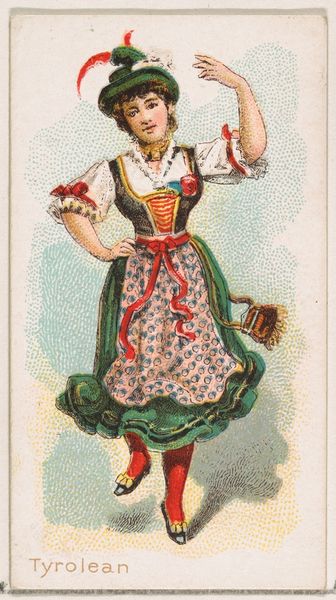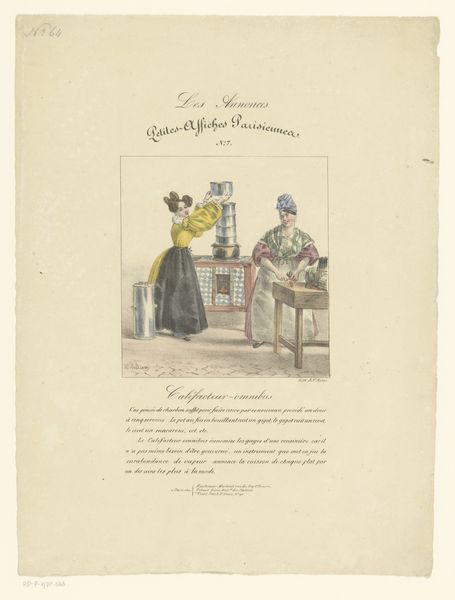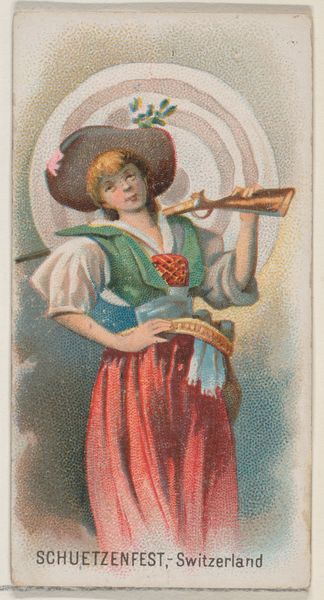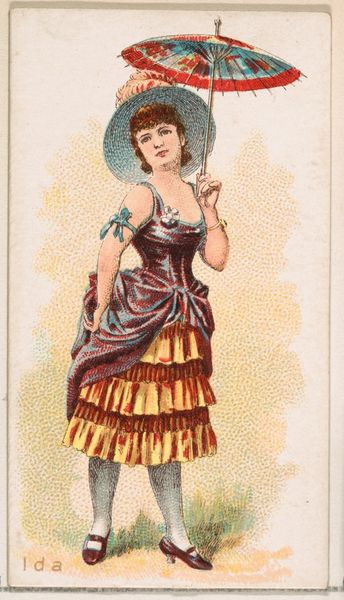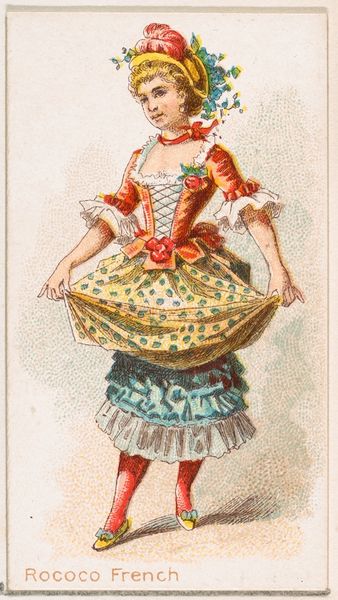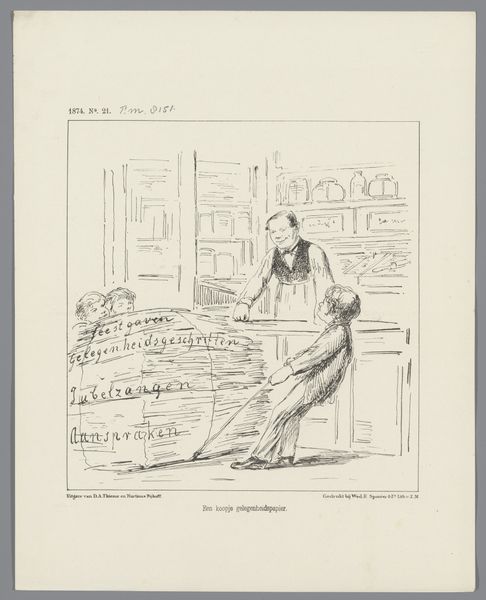
graphic-art, mixed-media, print, ink, poster
#
portrait
#
graphic-art
#
mixed-media
#
art-nouveau
# print
#
figuration
#
ink
#
line
#
sketchbook drawing
#
poster
Dimensions: height 245 mm, width 381 mm
Copyright: Rijks Museum: Open Domain
Curator: This elegant mixed-media print is entitled "Gazette du Bon Ton, 1914 - No. 6, p. IX: Advertentie Helena Rubinstein" by E. Ayres. Editor: It's strikingly sparse, almost minimalist, yet with an underlying art nouveau flourish. A definite sense of commercial chic with those elegant, flowing lines. Curator: Precisely. Placed within the Gazette du Bon Ton, this image highlights the convergence of fashion, art, and early advertising in a period of burgeoning consumer culture. The materiality of ink, paper, and the print process allowed for wide distribution. The repetitive linear details imitate woven textiles and reference industrial modes of production of fabrics in Paris. Editor: I see what you mean about production and dissemination shaping visual style. Ayres leverages the accessibility of print media to broadcast a message of aspirational beauty tied to specific products and locations, like the addresses listed below Helena Rubinstein’s name. The text itself reads “scientific culture of beauty thanks to ‘Valaze’ products.” Curator: And it signals a fascinating historical shift. We see beauty positioned not just as inherent, but as attainable through 'scientific culture' and consumption. The institution of beauty moves away from organic methods to a place of technological advancements which also parallels labor practices during the Industrial Revolution. Editor: Interesting. I tend to see it more as a portrait of marketing at a transitional time, between handcrafted ideals and mass consumerism. The beauty products themselves are presented more symbolically than realistically, as commodities mediated by line and textual inscription. It all contributes to the myth of attainable Parisian beauty. Curator: I agree there's definitely a dialogue happening in the transition from handcraft ideals to mass-produced consumables through art. However, seeing how artists worked as the first advertising firms speaks volumes for how material and labor intertwine in early advertising. Editor: On the whole, viewing it through these different lenses underscores the enduring power of visual culture and advertising to shape societal values. Curator: Absolutely. Analyzing the work reminds us of advertising’s profound effect on everyday objects, imbuing our perceptions of consumption, fashion, and even of our selves.
Comments
No comments
Be the first to comment and join the conversation on the ultimate creative platform.

